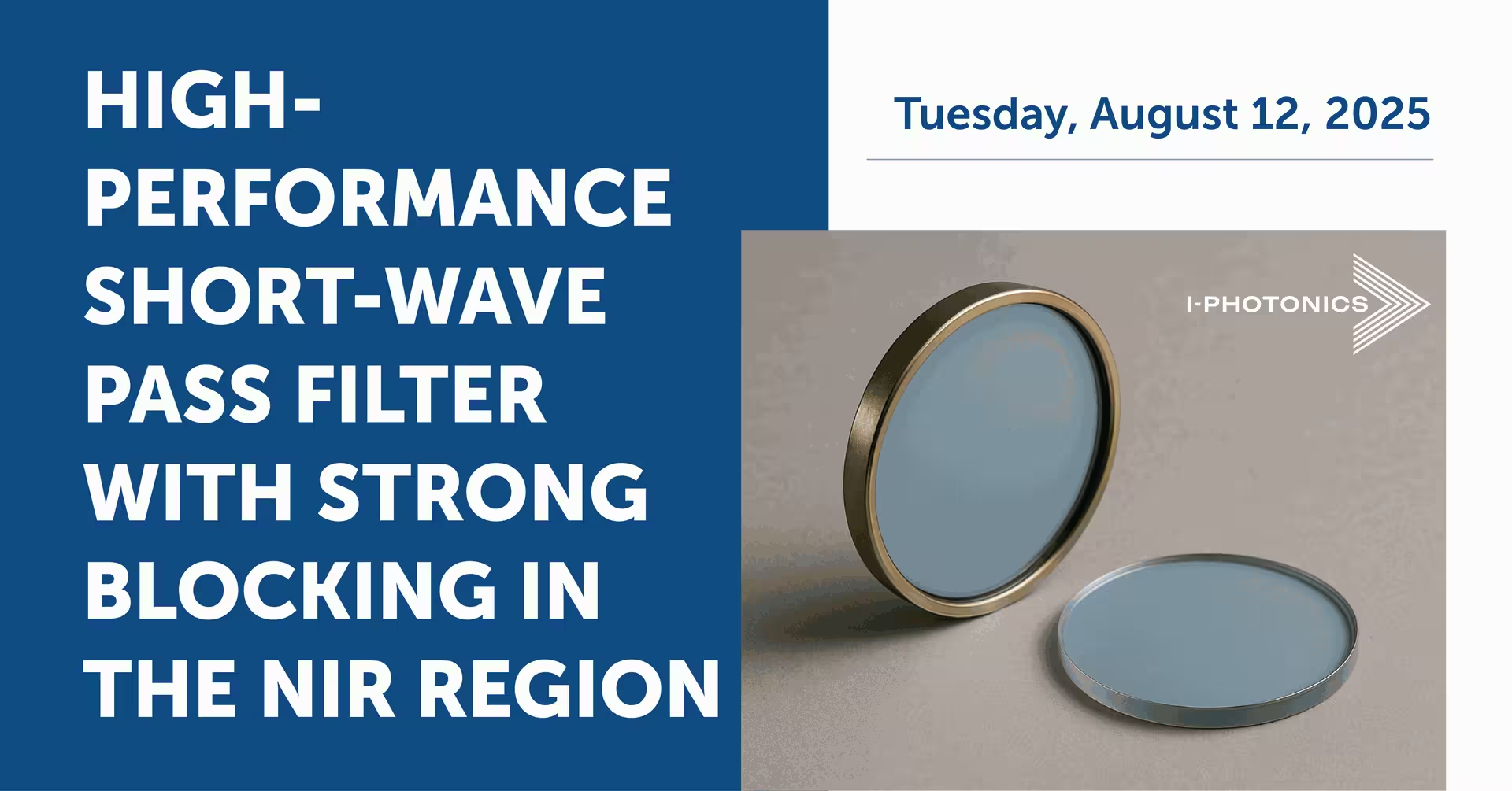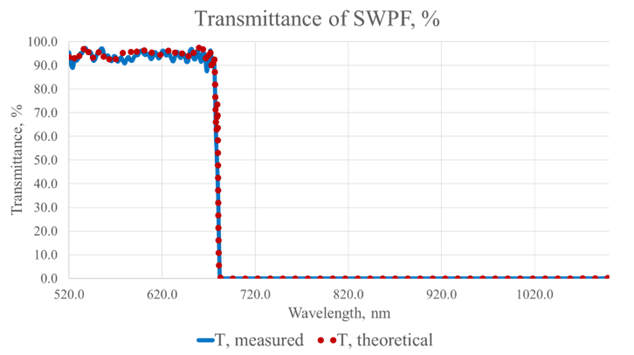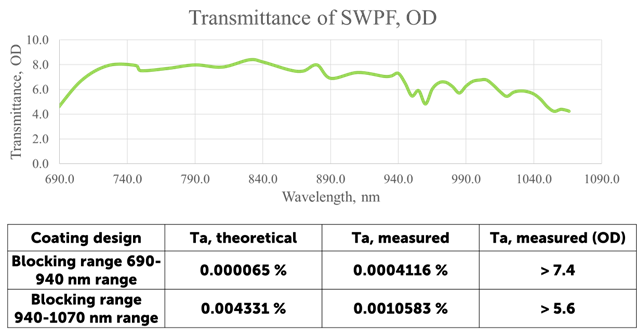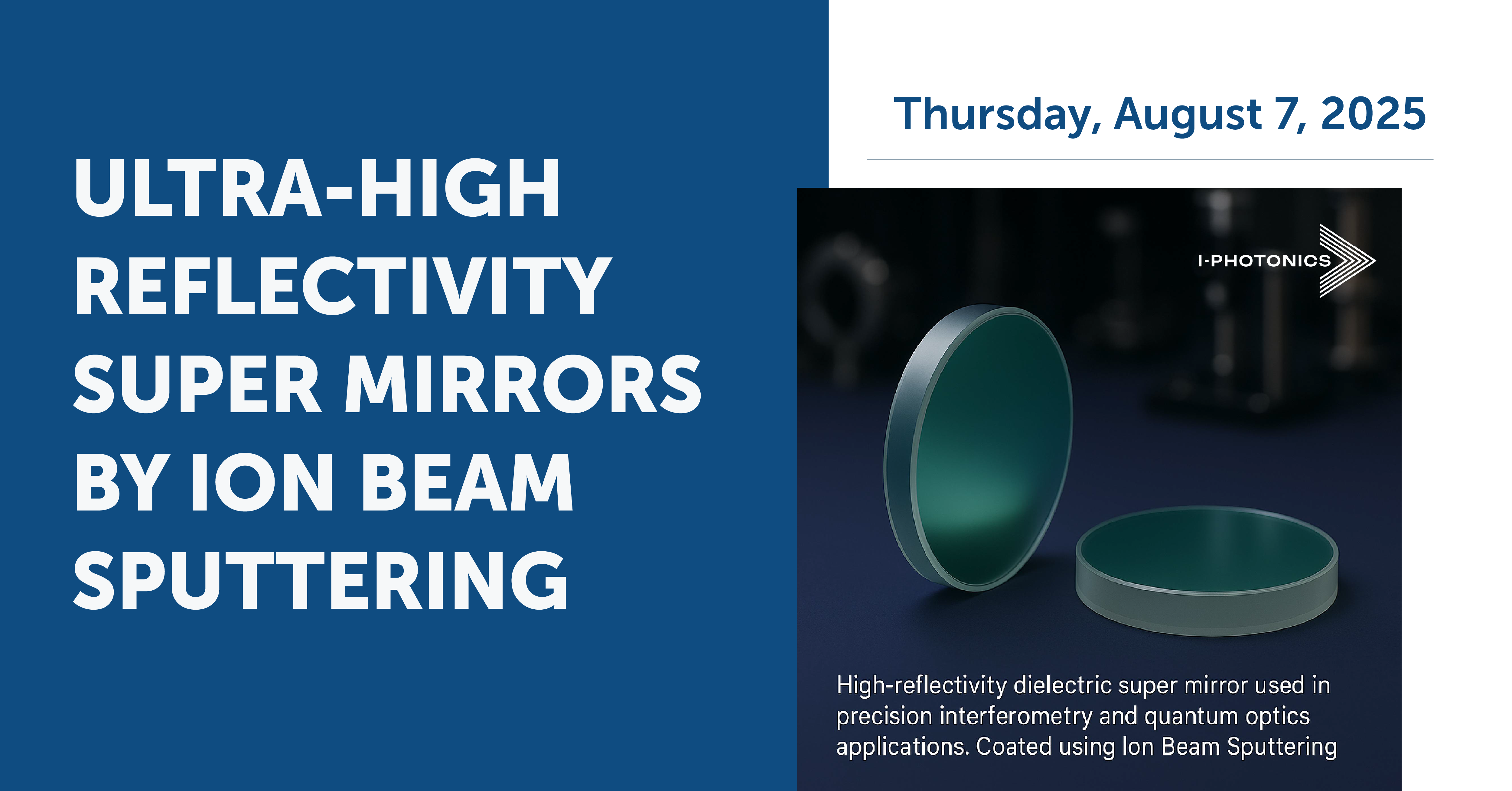High-Performance Short-Wave Pass Filter with Strong Blocking in the NIR Region
In this edition, we present a cutting-edge short-wave pass filter designed for superior blocking in the near-infrared (NIR) range. Featuring a highly transparent visible passband and ultra-steep edges, this filter enhances contrast and sensitivity for applications like biomedical imaging, laser-induced fluorescence, and precision spectroscopy.

Effective blocking in the visible and near-infrared (NIR) spectral ranges is crucial for minimizing background noise in applications such as biomedical imaging, laser-induced fluorescence, and precision spectroscopy. The presented optical filter features a narrow visible passband and ultra-steep spectral edges, enabling precise wavelength separation and significantly enhancing contrast and detection sensitivity in demanding optical systems.
This short-wave pass filter (SWPF) was designed using OTF Studio software and fabricated with I-Photonics' PARMS-based Meridian1100 coating system (Vilnius, Lithuania). The filter achieves an average transmission of 90% in the 520–690 nm range, with optical densities exceeding OD > 6 between 690–940 nm and OD > 4 extending up to 1070 nm. The multilayer coating consists of 130 alternating layers of Ta₂O₅ and SiO₂, reaching a total thickness of 12 µm, deposited on a high-purity fused silica substrate.
Measured vs. Theoretical Performance
The spectral characterization was performed using the PHOTON RT 0420 Ultra spectrophotometer (Essenoptics, Vilnius). As shown in the first figure, the measured transmission closely matches the theoretical model across the entire wavelength range. The filter demonstrates a sharp cut-off near 690 nm, with edge steepness as low as 0.02%.

Figure 1. Transmittance of SWPF, %
In the near-infrared region, the filter achieves exceptionally high blocking performance, with measured average transmittance levels as low as 0.0004116% in the 690–940 nm range, corresponding to an optical density greater than OD 7.4. Blocking remains strong up to 1070 nm, maintaining OD >5.6. These results are visualized in the second figure and summarized in the accompanying table.

Figure 2. Transmittance of SWPF, OD
These results underline the capability of I-Photonics' technology to produce highly stable, repeatable coatings that surpass the limitations of traditional multilayer deposition methods.
I-Photonics has extensive experience in working with Ion Beam technology and the Physics of Thin Films. Our team has decades of experience in the Research and Development of coatings for all aspects of precision optics, as well as expertise in developing hardware to improve the capability of existing coating technologies. Within a large portfolio of built coating equipment and processes, I-Photonics is capable of offering competitive turn-key equipment and coating solutions for a wide range of applications.

Thin Layers, Big Impact: I-Photonics Innovations in BBAR Coatings
In this edition, we highlight broadband anti-reflection (BBAR) coatings engineered for the critical 8–14 µm LWIR range. By minimizing surface reflections on ZnS and Ge optics, these multilayer coatings achieve transmission levels above 94–98%, unlocking higher sensitivity and performance in thermal imaging, laser systems, and IR sensors.

Ultra-High-Reflectivity Super Mirrors by Ion Beam Sputtering (IBS)
I-Photonics UAB creates super mirrors with record-high reflectivity and ultra-low optical losses for the most demanding optical systems. Using advanced Ion Beam Sputtering and precision surface engineering, the company delivers components that meet the needs of quantum optics, interferometry, and other ultra-sensitive applications.